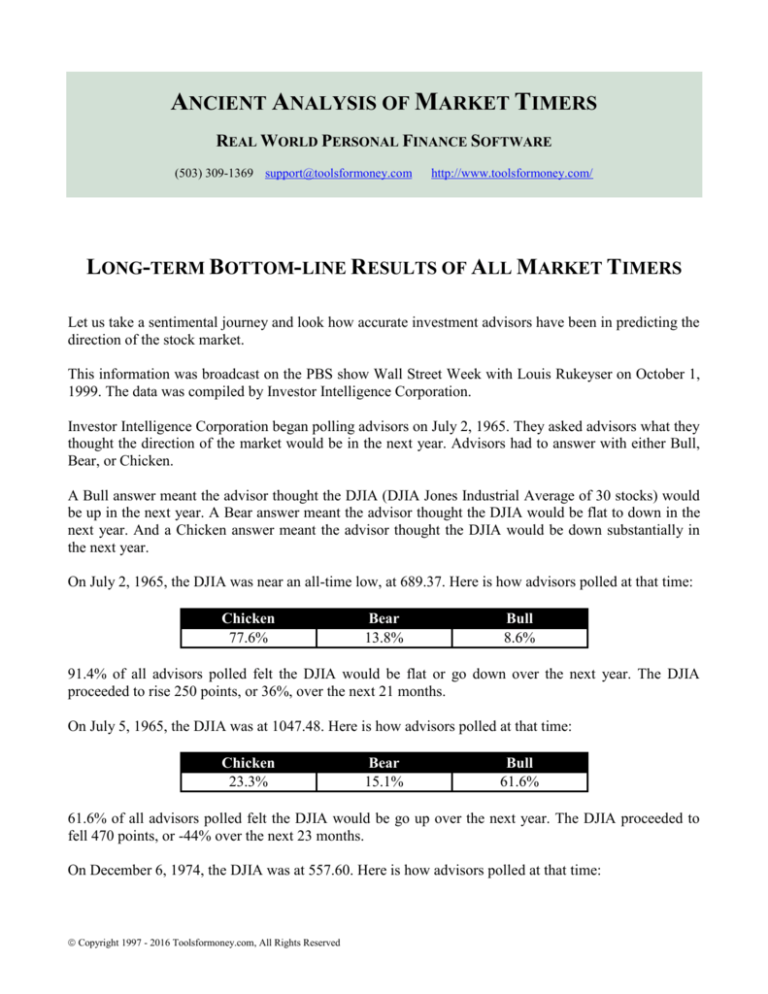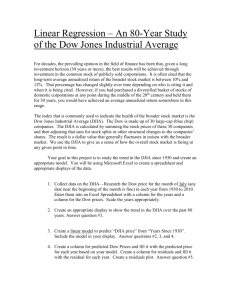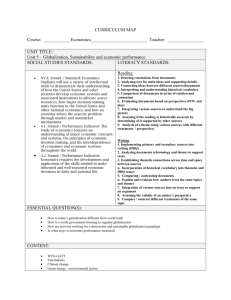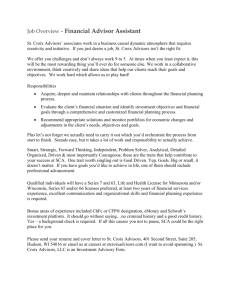
ANCIENT ANALYSIS OF MARKET TIMERS
REAL WORLD PERSONAL FINANCE SOFTWARE
(503) 309-1369 support@toolsformoney.com
http://www.toolsformoney.com/
LONG-TERM BOTTOM-LINE RESULTS OF ALL MARKET TIMERS
Let us take a sentimental journey and look how accurate investment advisors have been in predicting the
direction of the stock market.
This information was broadcast on the PBS show Wall Street Week with Louis Rukeyser on October 1,
1999. The data was compiled by Investor Intelligence Corporation.
Investor Intelligence Corporation began polling advisors on July 2, 1965. They asked advisors what they
thought the direction of the market would be in the next year. Advisors had to answer with either Bull,
Bear, or Chicken.
A Bull answer meant the advisor thought the DJIA (DJIA Jones Industrial Average of 30 stocks) would
be up in the next year. A Bear answer meant the advisor thought the DJIA would be flat to down in the
next year. And a Chicken answer meant the advisor thought the DJIA would be down substantially in
the next year.
On July 2, 1965, the DJIA was near an all-time low, at 689.37. Here is how advisors polled at that time:
Chicken
77.6%
Bear
13.8%
Bull
8.6%
91.4% of all advisors polled felt the DJIA would be flat or go down over the next year. The DJIA
proceeded to rise 250 points, or 36%, over the next 21 months.
On July 5, 1965, the DJIA was at 1047.48. Here is how advisors polled at that time:
Chicken
23.3%
Bear
15.1%
Bull
61.6%
61.6% of all advisors polled felt the DJIA would be go up over the next year. The DJIA proceeded to
fell 470 points, or -44% over the next 23 months.
On December 6, 1974, the DJIA was at 557.60. Here is how advisors polled at that time:
Copyright 1997 - 2016 Toolsformoney.com, All Rights Reserved
Chicken
15.4%
Bear
48.1%
Bull
36.5%
63.5% of all advisors polled felt the DJIA would be flat or go down over the next year. The DJIA
proceeded to rise 426 points, or 76%, over the next 15 months.
Are you getting the picture?
On December 31, 1976, the DJIA was at 1004.65, an all time high. Here is how advisors polled at that
time:
Chicken
9.4%
Bear
62.0%
Bull
84.4%
84.4% of all advisors polled felt the DJIA would go up over the next year. The DJIA proceeded to fall
263 points, or -26%, over the next 14 months.
On August 6, 1982, the DJIA was at 784.34, the bottom of the bear market. Here is how advisors polled
at that time:
Chicken
20.6%
Bear
45.1%
Bull
34.3%
65.7% of all advisors polled felt the DJIA would be flat or go down over the next year. The DJIA
proceeded to rise 1938 points, or 247%, over the next five years.
On August 21, 1987, the DJIA was at 2709.50, the bottom of the bear market. Here is how advisors
polled at that time:
Chicken
20.0%
Bear
19.2%
Bull
60.8%
60.8% of all advisors polled felt the DJIA would go up over the next year. The DJIA proceeded to lose
971 points, or 35%, over the next eight weeks.
The indicator has never been so bullish again, when super-bullish would have been the best call.
On November 25, 1988, the DJIA was at 2074.01. Here is how advisors polled at that time:
Chicken
23.6%
Bear
55.3%
Bull
21.1%
78.9% of all advisors polled felt the DJIA would go down over the next year. The DJIA proceeded to
rise 1904 points, or 91%, over the next 62 months.
On July 1, 1994, the DJIA was at 3646.65. Here is how advisors polled at that time:
Copyright 1997 - 2016 Toolsformoney.com, All Rights Reserved
Chicken
24.1%
Bear
52.6%
Bull
23.3%
76.7% of all advisors polled felt the DJIA would go down over the next year. The DJIA proceeded to
rise 4148 points, or 113%, over the next 37 months.
On September 11, 1998, the DJIA was at 7795.17. Here is how advisors polled at that time:
Chicken
16.1%
Bear
47.5%
Bull
36.4%
63.6% of all advisors polled felt the DJIA would go down over the next year. The DJIA proceeded to
rise 3008 points, or 38%, over the next 12 months.
Déjà vu all over again.
On September 17, 1999, the DJIA was at 10803.63. Here is how advisors polled at that time:
Chicken
27.1%
Bear
31.4%
Bull
41.5%
One of the most bearish readings in a year.
Where will it go from here? Given the record of these advisors, nobody knows.
This poll is one of the reasons why we don’t practice market timing. Nobody knows where any market is
headed, and as Louis Rukeyser pointed out - the “pros” have had a great record of forecasting the exact
opposite of what actually happened. That’s why we try not to predict the direction of any market, asset
class, or stock.
We determine your investment allocation based on their risk tolerance, investment income-need, their
ages, whether or not you’re retired, how much you have in investments, and a few other things. After we
determine the mix of asset classes, we stick to it regardless how anyone feels where markets may be
heading. We keep your mix the same until one of the life factors above changes for you.
Even though we agree with Louis Rukeyser that market timing is a futile endeavor, we disagree with
him on the issue of security selection (stock picking). If you watch Wall Street Week, then you know
that the show is based mostly around stock picking. With this in mind, let’s discuss these three ways of
making investment decisions in more detail (see this webpage for details).
Louis Rukeyser passed away on the same day as John Kenneth Galbraith (along with Don Knotts,
Darrin McGavin, and Dennis Weaver on the same weekend) - Sunday, April 30, 2006.
Both were very old, will be missed, and contributed greatly to our understanding of how the world
actually works.
Copyright 1997 - 2016 Toolsformoney.com, All Rights Reserved









